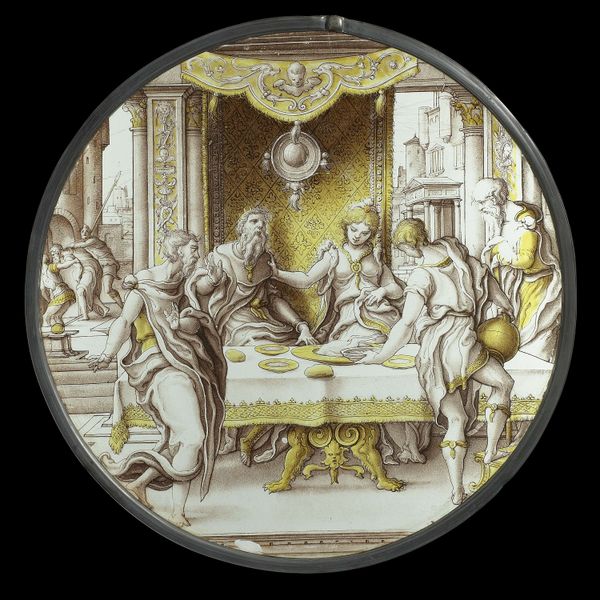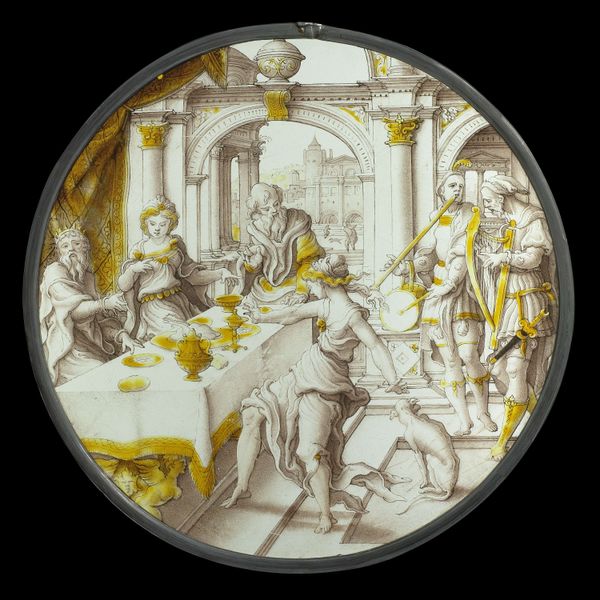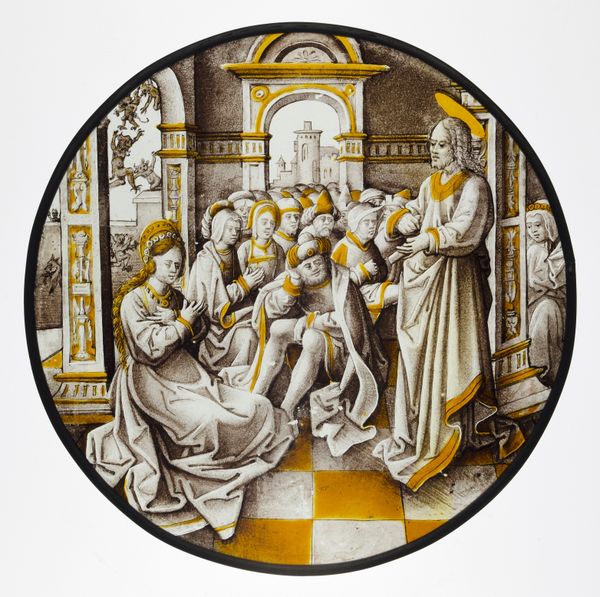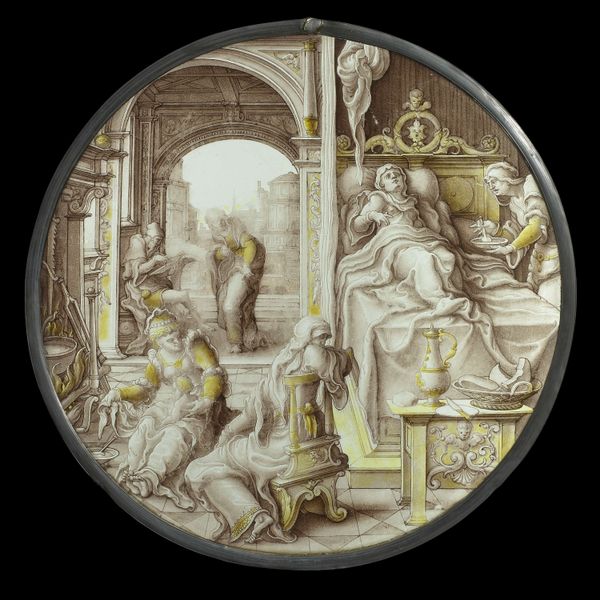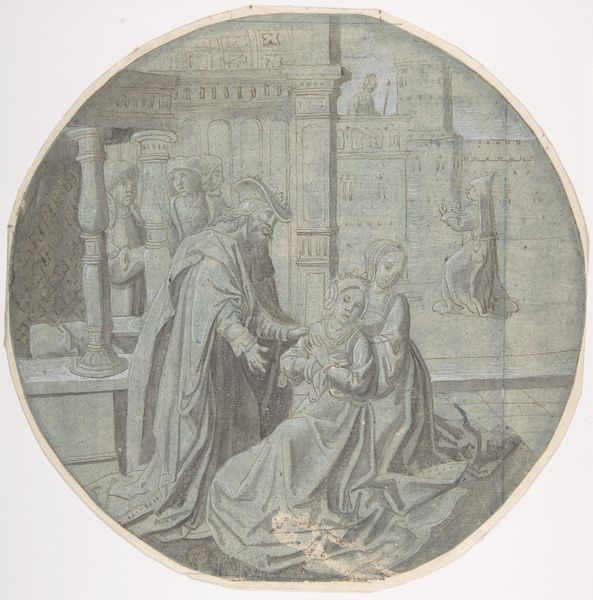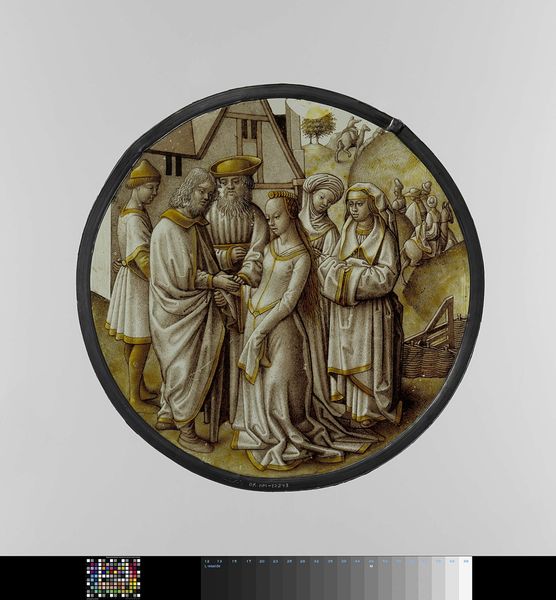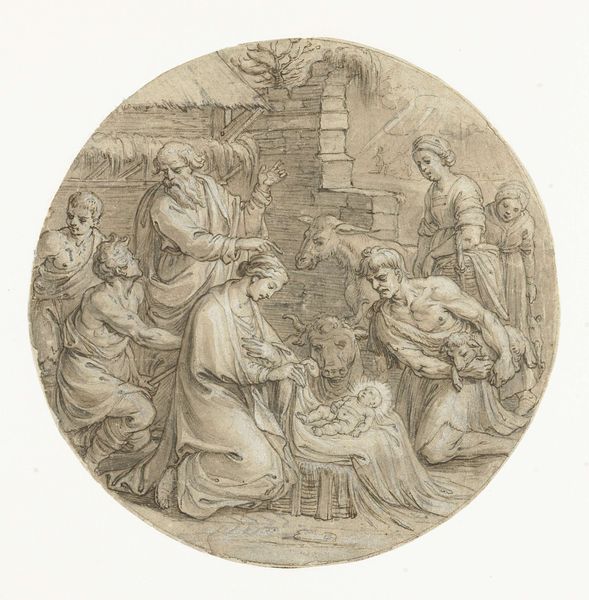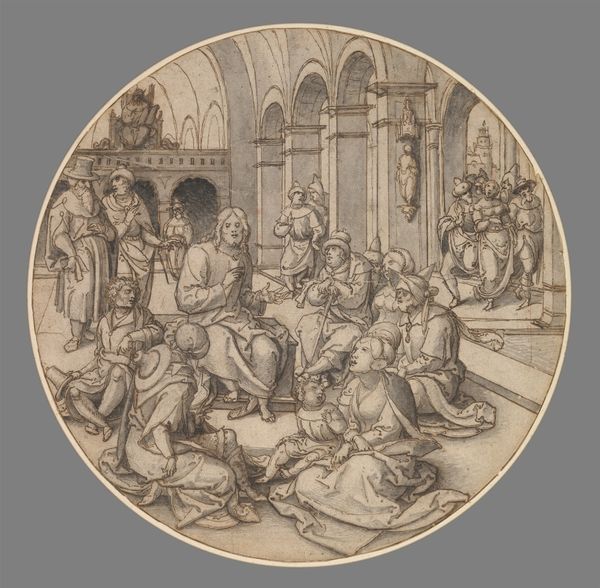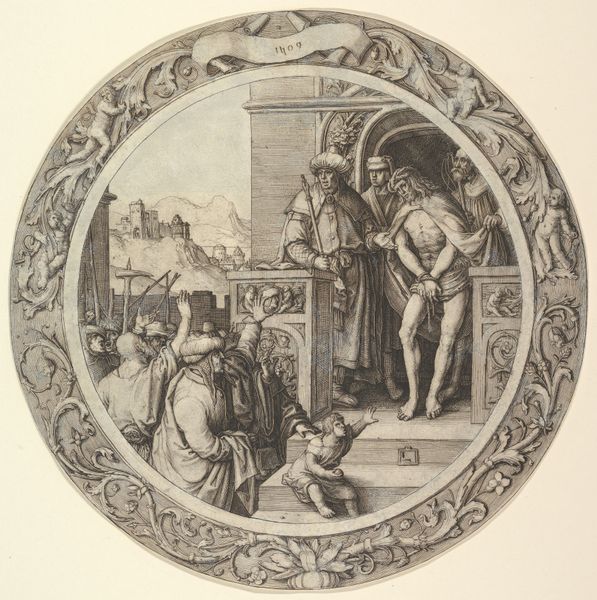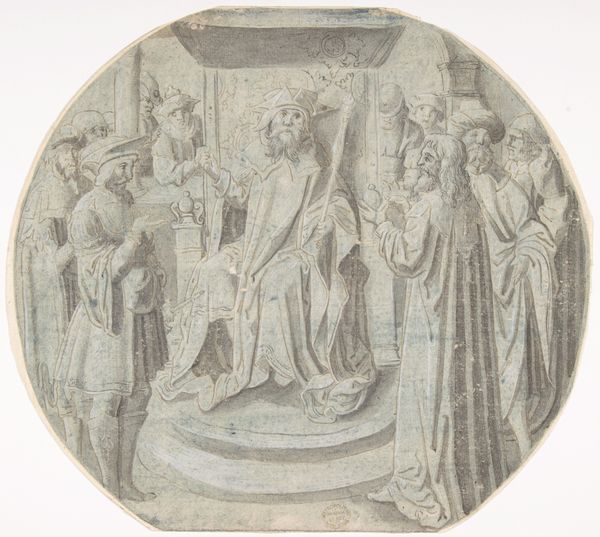
tempera, painting
#
narrative-art
#
tempera
#
painting
#
sculpture
#
history-painting
#
northern-renaissance
Dimensions: diameter 24 cm, thickness 0.7 cm
Copyright: Rijks Museum: Open Domain
Curator: This tempera painting, titled "Comforting the Dying", dates from around 1510 to 1520 and comes to us from an anonymous artist of the Northern Renaissance. The circular composition immediately pulls your eye to a very human drama playing out. What do you think, Editor? Editor: Oh, it’s… heavy, isn't it? That stark white deathbed contrasted against the activity swirling around feels so immediate. Death was truly part of daily life back then. Almost like stagecraft with that intense drama unfolding inside, then, outside on the "street" there is an almost jaunty sense of folks milling about—seemingly unbothered. The color adds an other-worldly element... Curator: I'm struck by the layers embedded within the physical construction. Using tempera demands precision in building up translucent layers, allowing for meticulous details. Notice how this method allows us to really engage with the texture of fabrics in relation to death rituals and class displays. A cross and holy man are brought to "comfort" while others—including medical professionals offer a bowl—perhaps indicating that spiritual and physical comfort were afforded at death's door for wealthier classes. Note the composition even places Christ next to the patient, both visually united by bright haloes. Editor: That detail of Jesus present is poignant! Tempera feels perfect; it's so contained, so meticulous, that it matches the tight control people seemed to crave over death back then. Yet even though everything feels orderly and deliberate—almost performative-- there’s also this raw vulnerability of someone facing their end with perhaps just...acceptance. Curator: Acceptance stemming from faith perhaps. Looking closely, the figures attending the dying person represent various social roles interwoven at this critical moment—the church, medicine, and perhaps familial duty each present as active participants shaping not just the end, but our visual record of it. It's also worth noting, if this artwork were commissioned, we need to also account for that person’s desires on how to picture his passing to also address issues of wealth and legacy. Editor: Thinking about legacy is important: they have managed to get Jesus to visit them for their exit—quite impressive if I say so myself! Curator: A potent reminder, indeed, that our present experience is often intimately entwined with past socio-economic systems and materials—with our eventual end shaped by many influences—real or self-willed. Editor: Yes, and maybe seeing this rather controlled depiction helps me confront something still so wild and uncontrollable! I mean, none of us get a "controlled take two" at the point of our passing! This artwork's a powerful meditation.
Comments
No comments
Be the first to comment and join the conversation on the ultimate creative platform.
